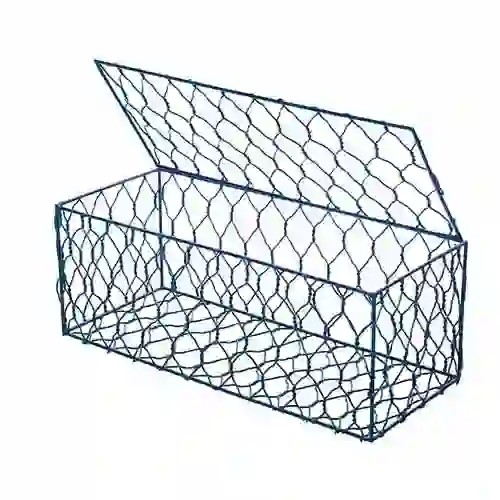-
 Phone:
Phone: -
 Email:
Email:

Exploring the Connection Between Barbed Wire and Chain Link Fencing Solutions
The Evolution and Impact of Barbed Wire and Chain Link Fencing
Barbed wire and chain link fencing are two pivotal innovations that have significantly shaped agricultural practices, property demarcation, and security measures throughout history. The invention and subsequent development of these materials have facilitated not only the management of livestock but also the establishment of boundaries in urban landscapes.
The Inception of Barbed Wire
Barbed wire, patented in the United States in 1867 by Joseph Glidden, revolutionized the way ranchers and farmers managed livestock. Prior to its introduction, traditional fencing was often expensive and labor-intensive, utilizing materials like wood and stone. However, barbed wire offered a cost-effective solution that could be produced en masse. The twisted strands of wire adorned with sharp barbs proved to be an effective deterrent against cattle wandering off and other animals breaching property lines.
The rise of barbed wire coincided with the westward expansion in the United States, where the need to protect crops and livestock became critical. Ranchers quickly adopted this technology, leading to an increase in agricultural productivity. Barbed wire enabled the division of vast expanses of land into manageable sections, facilitating the careful breeding of livestock while simultaneously reducing conflicts between settlers over land use. This practicality transformed the American landscape, effectively fencing off the Wild West and influencing land ownership practices.
Chain Link Fencing A Versatile Solution
While barbed wire addressed certain agricultural needs, chain link fencing emerged in the 20th century as a versatile alternative applicable to urban and industrial settings. Crafted from interwoven steel wire, chain link fencing provided an effective barrier that was not only durable but also aesthetically appealing. Its transparent nature allowed visibility while maintaining security, making it an ideal choice for schools, parks, and residential areas.
One of the defining features of chain link fencing is its adaptability. It can be customized to various heights and coated with materials resistant to rust and corrosion, which extends its life span and effectiveness. Because of its strength and flexibility, chain link fencing became the go-to solution for a myriad of applications, from enclosing sports fields to protecting industrial sites.
barbed wire chain link

Moreover, the ease of installation and maintenance of chain link fences contributed to their widespread usage. Unlike traditional wooden or metal fences that often require regular painting or repairs, chain link fences are generally low-maintenance. Their resilience against weather elements further solidified their place in modern construction and security.
The Interplay Between Barbed Wire and Chain Link Fencing
Barbed wire and chain link fencing, while distinct, share a common purpose to establish boundaries and protect property. In some cases, these two materials have been used in conjunction, particularly in agricultural settings where livestock control is paramount. Ranchers might use chain link fences for secure enclosures while adding barbed wire to the top to dissuade potential intruders.
While barbed wire has sometimes garnered a reputation for being harsh or aggressive, its use in rural America was justified by the need for effective animal control. Conversely, chain link fencing has often been perceived as a more humane and visually acceptable option in urban environments, bridging the divide between security and aesthetic considerations.
Modern Applications and Future Considerations
In today’s world, both barbed wire and chain link fencing continue to evolve. Innovations in materials and manufacturing processes have led to increased durability and reductions in cost. Moreover, as urban areas expand and security concerns persist, the demand for effective enclosure solutions has never been higher.
In the agricultural sector, modern ranchers are now integrating technology such as solar-powered electric fencing with traditional barbed wire to enhance security while minimizing human labor. In urban planning, chain link fencing is being used in innovative ways, often combined with plants and trees to create green barriers that promote environmental sustainability.
In conclusion, the evolution of barbed wire and chain link fencing reflects the changing needs of society. Both materials have played crucial roles in shaping land management and security practices, and as technology continues to advance, they will adapt to meet new challenges. Whether in vast agricultural fields or densely populated cities, these fencing solutions remain essential tools in the ongoing quest for effective boundaries and safety.
-
Wire Mesh for Every Need: A Practical SolutionNewsJul.25,2025
-
Steel Fences: Durable, Secure, and Stylish OptionsNewsJul.25,2025
-
Roll Top Fencing: A Smart Solution for Safety and SecurityNewsJul.25,2025
-
Cattle Farm Fencing Solutions for Maximum SecurityNewsJul.25,2025
-
Affordable Iron Binding Wire SolutionsNewsJul.25,2025
-
Affordable Galvanized Wire SolutionsNewsJul.25,2025
-
Wire Hanger Recycling IdeasNewsJul.25,2025








